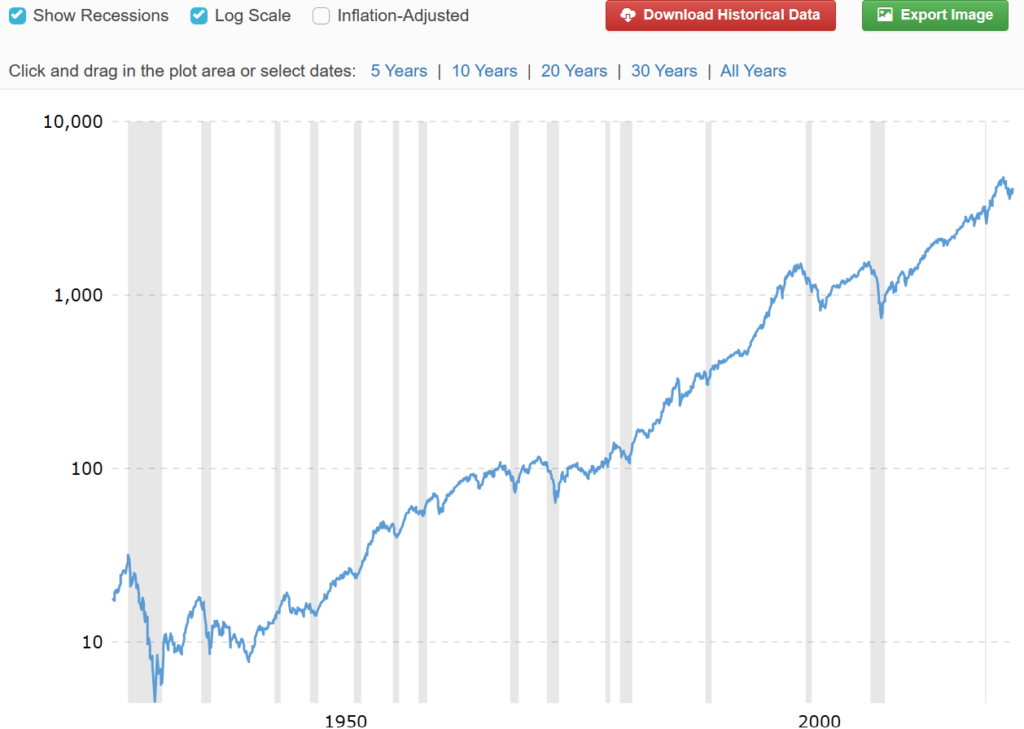What is Risk?
If you do a Google search for “definition of risk,” there are many definitions. Some that I came across are as follows:
- A situation involving exposure to danger
- Possibility of loss or injury
- Someone or something that creates or suggests a hazard
But the most well-balanced definition I’ve found was in the Cambridge Dictionary: the possibility of something bad happening.
The investment industry has come up with their own definition of risk. Throughout my career, it has been pretty well accepted that risk is equivalent to standard deviation.
Standard deviation simply tells us how much an investment’s returns tend to deviate over time. The more the returns deviate, the more risky the investment.
Consider the stock market. The average historical return for the S&P 500 has been around 10% per year. But as we all know, that rarely happens. Some years the stock market is up +30%. Some years it can be down -20%. This means it has a high standard deviation. Which, by the industry’s definition, means it is risky.
And because the stock market is “risky,” investors need complex portfolios and expert investment managers to do it for them. Nonsense!
Loss of Value vs. Loss of Money
Here’s the thing. High standard deviation can be a great thing! It’s actually something I embrace. Because if the returns can deviate substantially, that means there is a higher potential for my investment to go up a lot. And I want to make lots of money on my investments.
This is why it’s important to distinguish between loss of value and loss of money. If the value of my investment falls by -20%, but goes up by +50% before I need to sell it, who cares about the temporary loss of value?
To illustrate this, consider a $10,000 investment that falls by -20%. It is now worth $8,000. But if that $8,000 increases by +50%, it would be worth $12,000 – a gain of +20% on the original investment.
You only lose money if you are forced to sell your investment when it’s value is low.
Liquidity Hedge
This is why a “Liquidity Hedge” is so important. Industry jargon aside, liquidity simply means cash on hand. If you have cash on hand to cover your needs, you don’t need to sell your investment at a bad time.
And when you own a stock market index fund – like a S&P 500 Index Fund – it can be viewed as an investment in the entire US economy. While an individual company can go out of business – and see its stock price fall to zero – the entire US economy probably isn’t going out of business. It’s probably going to continue to grow, despite inevitable but temporary setbacks.
After all, this is what it has always done:

Liquidity is Better than Bonds
To me, this is a far simpler and far more effective way to manage my investment risk versus what the industry taught me. The industry taught me to use bonds to hedge my stock risk. But bonds and stocks can fall in tandem.
Just look at the performance of US Treasury bonds last year. These are considered the highest quality bonds in the world. The 10-year US Treasury bond dropped -10.6% in 2022, while the 30-year US Treasury bond fell by -39.2%. And the S&P 500 fell by -19.44%.
So much for being a good hedge to my stock risk!
Furthermore, the average annual return for bonds has only been around 5%, according to this study from Vanguard. So, over time, bonds are a major drag on an investment portfolio. Personally – knowing I have virtually no risk of losing money on my diversified stock portfolio – I don’t want to sacrifice my long-term returns just to satisfy my short-term emotional reactions to changes in value.
How Much Liquidity is Right for You?
Everyone has different circumstances and risk tolerances, so the answer is different for everyone. The best way to come up with the answer for you, is to consider your annual expenses. You want to be able to cover your expenses – without selling your investments – when we are in a “bear market.”
A bear market means that the stock market is down -20% from a previous high. Once it hits this threshold, I refrain from selling investments. I want to use my liquidity hedge to cover expenses until the market has recovered and is back above the -20% watermark.
Looking back at history (since the Great Depression era – since there are many safeguards that were implemented to avoid such a situation in the future), the longest such period was almost 4 years – from February 2001 through December 2004. So, an investor with the most conservative risk tolerance might consider having 4-5 years worth of expected withdrawals set aside in a safe cash position. This would allow plenty of time for the portfolio to recover from a bad recession and/or bear market.
On the other hand, for someone who is still working and has no plans of withdrawing money from their investment account, it might make sense to have 3 – 6 months worth of living expenses set aside in cash. This would depend on whether there is one or two household incomes, among other considerations.
